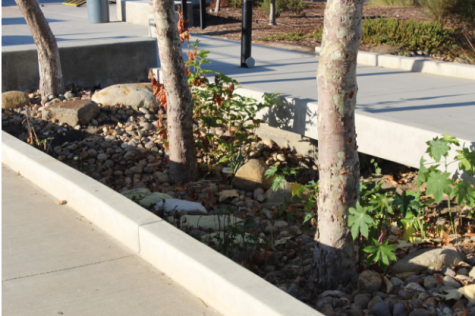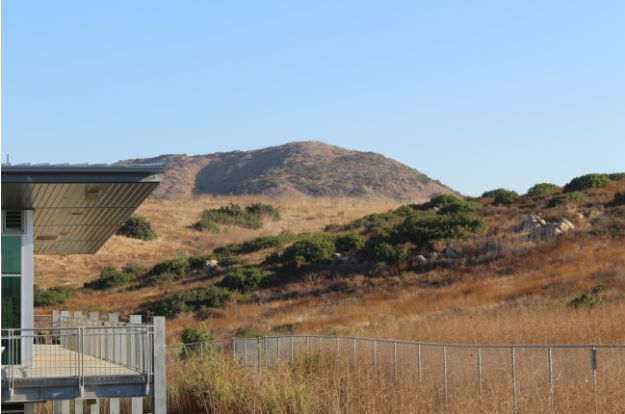Plastic-Free is Finally Trending
The plastic waste crisis: what’s being done and what we can do.
Sage Creek is creating a bridged community where the environment is nearly overlaying on campus. There are multiple nature areas that students can explore and enjoy all the time.
Plastic-free is finally trending. People are beginning to pay attention to their impact on the planet and are becoming more aware of their plastic waste thanks to many initiatives focused on eliminating the plastic waste crisis we face.
You may find that the next time you sit down at a restaurant you won’t immediately be given a straw, the Starbucks drink you just ordered may come in an adult sippy cup and your take outbox may be made of compostable material, these new developments are no accident.
The planet is experiencing a critical point when it comes to plastic waste, animals are choking on the debris, the majority of plastic created isn’t being recycled and there is simply no place to store our plastic waste.
According to National Geographic “Plastic takes more than 400 years to degrade, so most of it still exists in some form. Only 12 percent has been incinerated.”
Due to this, plastic waste has leaked into just about every corner of the world.

Sage Creek offers a public water station to encourage the reduction of plastic bottles. This came into effect in effort to combat plastic waste.
National Geographic estimates that “8 million metric tons of plastic ends up in the oceans every year.”
This is the equivalent of pouring one garbage truck of plastic into the ocean every minute. This is a serious problem and while it is a human-produced issue it can also have a human-produced solution.
Many companies are taking charge when it comes to their responsibility for the immense amount of plastic that has been manufactured. They are making changes to how they fabricate their products and making goals for their company that will help ensure we have a cleaner planet in the future.
Patagonia an outdoor gear company is one of the many companies making large strides toward decreasing their negative impact on the planet.
They have stated that “This fall, 69 percent of all Patagonia materials will be derived from recycled materials. Our goal is to use only renewable or recycled materials in our products by 2025.”
Other companies such as Adidas have also made a point to move in the direction of cleaner production that reduces plastic waste. Adidas announced that “By 2024, we aim to have all of our shoes and clothing made with recycled polyester. We’ll deliver the same style, high performance and durability while significantly reducing the impact on the environment.”
Oftentimes when companies decide to make the switch to cleaner production that includes using recycled materials the products they produce are not compromised, the recycled materials perform just as well as the virgin material.
Sage Creek has recycling goals of its own. The city is giving SCHS guidelines that we will need to follow in the upcoming years. These goals are being put in place so that we as a community can promote a cleaner and healthier environment.
The head custodian Chuck Morris says “…the city tells us that in a couple of years the majority of our (waste) has to be recycled, right now about one third of our waste goes into the recycling and two thirds goes in the big can, but we have to get it the other way around, two thirds in the recycling one third in the garbage…”

Sage Creek is preserving areas on campus that contain wildlife and significant natural places, so as to preserve the wildlife in the area. Sustainability is a focal point for the administration.
As of now, the majority of our plastic waste is not being recycled, Morris describes that when any food waste is put into the recycling bin the entire can becomes contaminated so it must be thrown away.
Morris also says he and the custodial crew are “on a tight time schedule, we can’t pick in and out of the trash.”
When it comes to reducing plastic waste and recycling when possible, the key seems to be general awareness. Morris believes the best way to fight plastic waste and achieve our recycling goal is through education.
“I think they need to hear it on a regular basis, so they can keep pitchin’ it in the right can.”
Sage Creek has already made strides toward reducing plastic waste. The environmental club made a successful push to install a water refill station with the purpose of encouraging students to use reusable water bottles in order to decrease the number of plastic bottles thrown away.
While large scale initiatives are important when combating the plastic crisis, individuals can also make a big difference. Sophomore Lulu Horne has always been aware of her plastic waste and works to reduce her impact on the planet. For students who’d like to reduce their impact as well, she suggests that they incorporate reusable containers into their lives.
She says,“[They] are actually very cost-effective and instead of buying disposable containers regularly you can do one slightly more expensive purchase that would actually save money in the long run and save plastic.”
“Less plastic, more living,” says Horne. The more we as a community can work toward not only recycling but eliminating our plastic waste the cleaner our world will be in the future. The bottom line is we all have the choice to use less plastic in our daily lives and when we do have to use plastic take Morris’s advice and toss it in the right can.



Bill Zhang ◊ Sep 30, 2019 at 9:20 pm
Remember when the store gave plastic bags for free?
Ansel ◊ Sep 29, 2019 at 5:30 pm
Does anyone remember when we were ENCOURAGED to use plastic because we were trying to save the trees? Every time we eliminate one problem another problem emerges all we are doing by switching away from plastic is moving the problem from one place to another. All we are doing is inconveniencing both the producers and consumers of all goods plastic in an effort to support a hopeless movement.